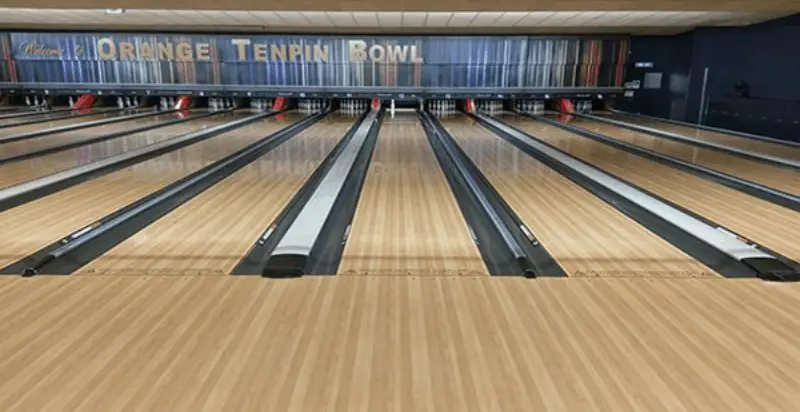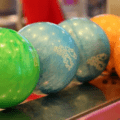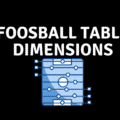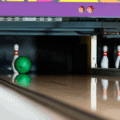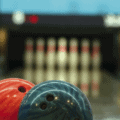While bowling can be a great casual activity, if you want to master your local bowling alley it may be in your best interest to learn about the playing field, or lane, in this case. The pros in other games and sports learn the space in which they’re operating to better their performance so, whether you want to impress your team or gain bragging rights over your family, read on to learn about the details and dimensions of a bowling lane.
On this page, we won’t just go through the dimensions of the standard bowling alley, but also the individual parts of those alleys, what they mean, and how you can use them to your benefit. Other relevant information that serious bowlers should know, such as regulations, have also been included.
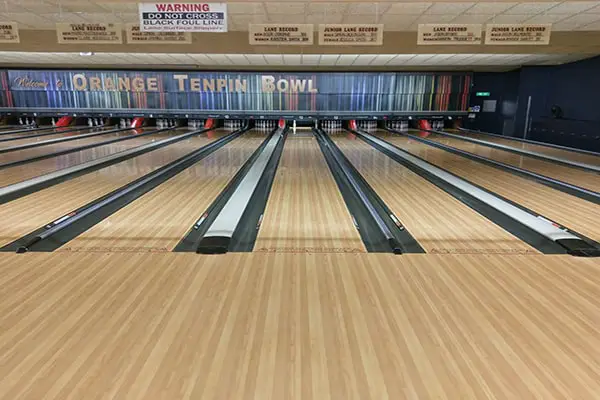
Bowling Lane Dimensions
You know the general shape of a bowling lane, obviously, but there is some use in knowing the specific measurements of these lanes and why they’re in place.
Every legitimate ten-pin bowling alley will be the same mandated length and width to comply with USBC regulations. Starting at the approach area before the lane itself, you’ll have about 15 feet, or 5 meters, in which to line up your bowling ball while applying your usual technique.
After you release the ball, it’ll travel down the 60-foot-long lane (18 meters). The lane width measures in at 41.5 inches, or 105cm. Where do you start measuring when taking the length and width of a bowling lane? The width is measured from the tips of each gutter, which is simple enough, while the length is determined by measuring from the head pin to the foul line. This means the seating area and the aforementioned approach area aren’t counted in these dimensions, and neither is the space behind that first pin.
Parts of a Bowling Lane
While we may talk about the bowling lane as a whole when discussing its length, width, and other important dimensions, these lanes are actually broken up into distinct parts. If you’re interested in the dimensions, then you may be interested in learning about these parts. We’ve even gone further and included some parts that are part of the alley itself, but not the lane, so aren’t included in the above dimensions. If learning about these parts sounds good to you, then please read on.
The Lane
Before breaking the lane down into more-specific parts, you should know that how the lane is oiled differs based on the three 20-feet areas that make up the full 60-foot length of your regulation bowling lane. The first 20 feet is called the head, or front-end, which is where most of the lane’s oil is applied. The next 20 feet, the mid-lane, is a transitionary area where less oil is found, until the lane ends with the final 20 feet, called the back end, where no oil at all is applied.
If you’re playing with older bowling lanes, you may also find that these sections are split into different kinds of woods, usually a harder wood at the front and a softer wood at the back, to achieve much of the same effect. Sometimes, the back end is again made with a harder wood, and instead the space between the front and back ends is where the softwood can be found.
The Boards
Now that we’ve talked about some of the surface aspects of bowling lanes, we should start digging into these lanes piece by piece. We say piece by piece because every bowling lane is actually made of many one-inch wide boards, 39 of them to be exact. Most of them are indistinct from one another with the exception being board 20 which, in a standard lane, will be the board that falls directly at the center of your lane. Other exceptions include those boards that bear markings on them, leading into our next section.
Lane Markings
Some of these boards that make up the lanes are decorated to assist bowlers, most notably with an assortment of arrows and dots, and a foul line. To start with the simplest, the foul line is placed at the end of the approach area, which is another 39-board section where bowlers compose and execute their shot.
It’s usually good practice to keep your feet up against the foul line that demarcates where the approach area ends, and the lane proper begins. This is because you want to be as close as possible, though it’s important you don’t overstep as that will make cause a foul! You foul by placing any part of your body, usually the foot, onto the floorboard past the foul line. More modern bowling alleys will have sensor-tricked alarms that alert people when you have fouled a throw.
There are three sets of dots, called dowels, on the lane. The first of these is before the foul line by about two or three inches, and they’re usually called approach dots since they’re technically not on the lane itself. If they’re not on the lane, then why are they there? They’re intended to be guides as to where your feet should be at each stage of throw, from your starting point to the foul line where your feet stop.
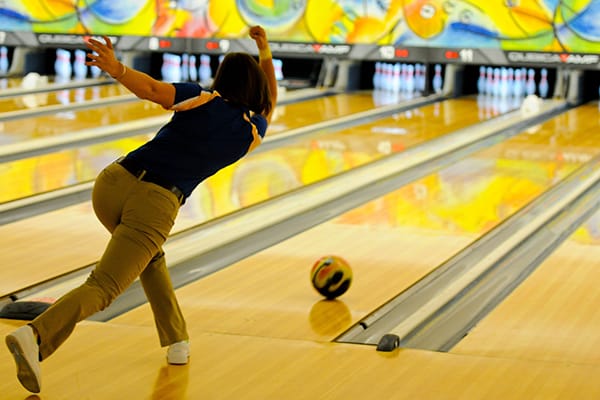
The lane dowels are usually at 12 and 15 feet into the lane proper. A center spot is placed on the 20th board which, as mentioned above, is the center piece of the board. A skilled bowler becomes intimate with many of these dowels in order to navigate their lanes and better place their bowls to strike at the pins where intended.
The arrows are arranged in a V-shape beyond the start of the lane, spanning almost its entire width, and are spaced five boards apart, meaning they fall on every fifth board. They’re placed closer to the front of the lane so that the bowlers have a good sight on them. We’re sure that, even when you were a newbie to bowling, you instinctively used these arrows to aim your bowls.
Since there are just the seven of them, it’s easy to number them for reference too, which is handy for team communication or commentating on a bowling game. That said, there isn’t any regulation here and the numbers assigned to each arrow are usually dependent on the dominant hand of the bowler, with lefties counting from left to right and vice versa.
We’ve neglected to mention another form of lane marking because it’s actually overlooked by a lot of bowlers. Amongst the boards that make up the lane, there will be about four boards that are discolored, usually darker than the rest of the boards used. This is intentional as these boards can then be used to effectively establish the ranges you’re working with. They’re located at approximately 34 and 40 feet from the start of the lane and can be quite handy when you know what you’re doing, so keep an eye out for them at your favorite bowling alleys.
The Gutters
Every bowler has been well-acquainted with the gutters at one point in their bowling prowess, so we’ll keep this short. The gutters are the dipped vents at either side of your bowling lane. Since they run parallel to the lane, they also need to be 60-feet long. If a bowling ball crashes into the gutter after falling off of the lane, it’s considered a missed throw that adds no points to your score.
The Pin Area
At the end of the lane is the pin area, the promised land that your bowling ball needs to reach if you want any hope of competing in a bowling game. It’s not as important as other lane features because, as explained above, the lane technically ends at the head pin and so the pin area isn’t part of it. That head pin is placed exactly 60-feet away from the foul line, establishing the end of the lane.
This doesn’t mean the pin deck should go ignored, however, as it can be valuable knowing how pins are arranged if you want to try and start a chain reaction and get the coveted strike. There are ten pins in total, all arranged in a triangular shape with the head pin being number one, the two pins behind it being pins two and three. This continues in increasing rows until the fourth line of pins contains the pins seven, eight, nine, and ten.
At the back of the pin deck is usually a padded cushion or another form of comfortable stop that catches flying pins without them sustaining damage. This is especially important with alleys who use quality regulation wooden pins, though many commercial alleys may use pins made of plastic or other synthetic materials that react differently to impact forces.
Once pins have all been bowled over, the resetting mechanism begins work to reset them, harvesting them all and re-sorting them into their old formation. While it does this, it also sends the bowling ball itself rolling back towards the approach zone so that you can retrieve your trusty bowling ball for repeated use.
[no_toc]

I’m Lia and I love playing games. I started this site to share things with friends and they encouraged me to post more and now I’m trying to share things with the world – indoor and outdoor sports, and board and bar games. I write about things like Bocce, Croquet, Billiards, Darts and other fun ways to enjoy time with your friends and family!

